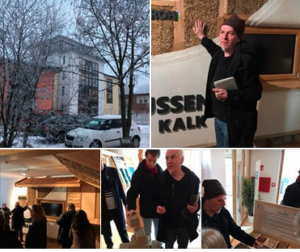Taking further steps with the TACCLE4-CPD project – Part Three: Mapping the approaches and contributions of parallel ITB projects
With my two latest blogs I have been started a series of posts with which I want to take further steps with the ongoing EU-funded TACCLE4-CPD project. In the first post I gave a nutshell description, how our institute (Institut Technik & Bildung, ITB) positions itself in the current TACCLE project as the partner responsible for the field of vocational education and training (VET). With the next post I summarised the legacy of the predecessor project Learning Layers (LL), and how we have been able to continue the work with the Learning Toolbox (LTB) – the main result from the LL Construction pilot – in its successor activities. With this post I will give a brief overview on the neighbouring ITB projects that focus on introducing digital media and web tools in the field of VET and on training of teachers and trainers.
Mapping the neighbouring projects – what for?
We started our discussions on the approach that ITB should take in the TACCLE4-CPD project with the question, how we could at best support for continuing professional development (CPD) activities in the field of VET. Our earlier activities in the LL project had brought us quite far in a strong multiplier-organisation in the construction sector (the training centre Bau-ABC Rostrup). Also, in the follow-up activities we had been able to witness, how practitioners in VET are ready to use the Learning Toolbox (LTB) in different contexts. Yet, we were short of an overview, what else is going on in projects that promote the use of digital media and web tools to support vocational learning and/or (informal) learning in organisational contexts. In order to fill this gap I interviewed several of my ITB colleagues and prepared a similar moodle-based overview as I had done on the training activities in the LL project and on the shaping and further use of the Learning Toolbox. The newest overview has the title “Digital Media, Web Tools & Training of Trainers – Overview of current projects alongside TACCLE4-CPD” and can be accessed via the following link (using the guest login):
http://moodle.itb.uni-bremen.de/course/view.php?id=14
Below I will give brief characterisations on the projects that I have explored and on their neighbourhood relations with the ongoing TACCLE4-CPD project.
Research-intensive projects with focus on the pedagogy of VET and workplace learning
The exemplary projects for this theme are in particular the following ones:
- The DieDa project studies empirically, how patterns of self-organised learning are developing in continuing vocational training for ecological construction work (and in parallel cases of CVT provisions in other sectors).
- The INTAGT project studies vocational learning and issues on health & safety in companies that introduce ‘Industry 4.0’ and draws conclusions for the development of VET provisions.
With these projects I experienced the closest neighbourhood relation to TACCLE4-CPD and also the greatest interest to work with the Learning Toolbox (LTB) as support for training the trainers.
Support for digital strategies and creative learning designs in vocational schools
The exemplary projects for this theme are in particular the following ones:
- The STRIDE project supports the development of digital strategies in partner schools in Ireland, Italy, Turkey and Poland. The partners from Germany (ITB) and Spain serve as expert partners that coordinate the studies and the training workshops.
- The RISE project promotes Design thinking and creative learning arrangements in vocational schools. The three partner schools and three expert organisations from Germany (ITB, Wilhelm Wagenfeld Schule), Spain and Slovenia develop concepts of ‘social enterprises’ and ‘innovation hubs’ to promote such concepts and validate the ideas in several workshops.
With these projects the working concepts are somewhat different but there are common interests – also concerning the use of the Learning Toolbox (LTB).
Support for learning and knowledge processes in specific occupational contexts
The exemplary projects for this theme are the following ones:
- The NABUS project for supporting training in ecological construction and renovation work.
- The MeMoApp project for supporting the use of mobile apps and digital tools in the logistic and transport occupations.
- The LiKa 4.0 project for promoting innovation transfer from the previous Kompetenzwerkstatt projects to craft trades.
- The LaSiDig project for promoting health and safety awareness in the logistic and transport occupations.
Here the projects were rather heterogeneous and some of them were at the beginning stage, whilst others had very dedicated software solutions. Therefore, further talks were needed to clarify the cooperation prospects.
—
I guess this is already enough for a first look at the neighbourhood. I will get back to most of the projects in April to specify, how we can develop further cooperation.
More blogs to come …

